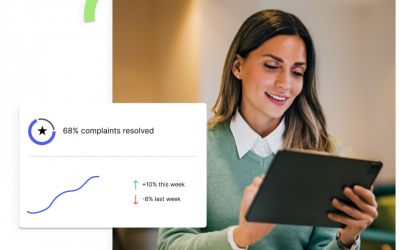A New Kind of Readiness
It’s not just about responding faster – it’s about planning smarter.
For today’s government agencies, traditional workforce planning isn’t enough. You’re not just forecasting retirements or backfilling roles. You’re navigating policy swings, budget freezes, public pressure, and unexpected crises – from natural disasters to cyberattacks to leadership turnover.
In this environment, “strategic workforce planning” needs to mean more than a static headcount projection. It should equip your agency to shift, absorb, and adapt – without losing momentum or mission focus.
So how do you plan for what you can’t predict?
1. Stop Planning in Isolation
Many public sector teams are still developing workforce plans in separate silos – finance, HR, operations, policy. But true resilience comes from connecting the dots:
- What if next quarter’s funding gets delayed?
- What happens if a new policy mandates upskilling for half your workforce?
- How would you staff up quickly if a crisis doubles community need?
These aren’t hypotheticals. They’re scenarios worth modeling today.
That means workforce planning should no longer be an annual checklist – it should be a living, responsive process tied directly to operational risk, policy timelines, and public-facing outcomes.
2. Scenario Planning is No Longer Optional
We’re seeing a rise in “uncertainty fluency” – the ability to not just respond to change, but model and prepare for it. For public sector HR and finance leaders, this means building flexible plans that account for:
- Election turnover: changes in agency priorities or leadership
- Policy disruption: new compliance requirements, technology mandates, or legislative shifts
- Crisis readiness: staffing needs for emergencies or surge response
When you can explore “what-if” scenarios – before they become real – you reduce risk, speed up decision-making, and maintain trust with both employees and stakeholders.
The partnership advantage: Agencies building the most resilient workforce strategies aren’t replacing existing systems – they’re integrating advanced analytics capabilities that work seamlessly within current workflows.
3. Continuity is a Workforce Strategy
One of the most overlooked risks in public workforce planning? Losing institutional knowledge during times of change.
Whether from retirements, attrition, or reorgs, every departure takes more than a body – it often takes context, history, and relationships. When crises hit or leadership changes, continuity depends on whether your agency has:
- Visibility into roles critical to operations
- Succession insights for hard-to-fill positions
- Cross-trained teams that can flex under pressure
Resilience isn’t just about recruitment. It’s about designing your workforce to maintain function and service even when conditions shift.
4. Why Listening Still Matters
Even in high-level scenario planning, employee voice should never be left out.
When staff feel unheard during change, trust erodes – and so does execution. Regular pulse surveys tied to upcoming shifts (e.g., new tech rollouts, policy changes, budget cuts) can flag readiness issues early:
- Are teams aligned on what’s coming?
- Do they feel equipped and supported?
- Are there morale or communication gaps that could stall execution?
Smart survey capabilities integrated within existing HR systems can inform scenario models. For example: if a major reorg is coming, survey data can highlight where resistance might emerge – and where you’ll need to invest in communication, training, or support.
5. The Strategic Partnership Approach
The most successful government workforce strategies combine existing system investments with embedded analytics partnerships that deliver:
Our workforce intelligence tools help public sector teams:
- Model workforce scenarios using real-time data from across your systems
- Track continuity risks across roles, departments, and tenure levels
- Use integrated survey tools to run engagement or change-readiness surveys that directly inform your planning.
- Visualize data through story-based dashboards that flag emerging challenges, skill gaps, or retention risks before they impact delivery
Because when uncertainty is high, clarity becomes your most valuable asset.
Final Thought: Resilience is a Choice
You can’t predict the future – but you can prepare for it.
By moving beyond static plans and building adaptive, cross-functional strategies enhanced through smart technology partnerships, public sector leaders can protect their teams, deliver on their mission, and lead with confidence – even when the path ahead is unclear.
At ZeroedIn, we help government agencies transform workforce planning through embedded analytics partnerships. Our platform integrates seamlessly with existing HR systems to deliver the real-time insights that drive strategic decisions




